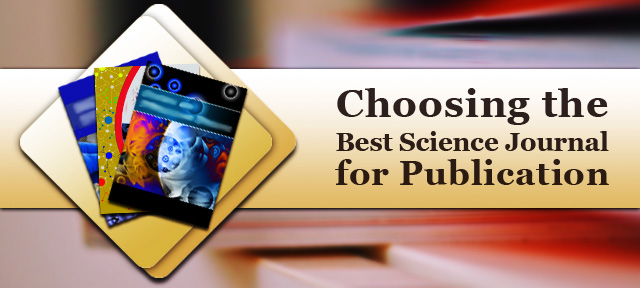Many scientists select to publish their work for career improvement, funding openings, as well as professional status. In addition, publications are the top metric to be used by the world to measure the success of a researcher. Therefore, it is significant to scrutinize every feature of the journal before submission.

The following stages should be followed in choosing the right journal and publication of the research findings:
- Scope of the Journal and Target Audience
The above info is freely accessible on the journal’s Web page. The section entitled “About the Journal,” “Aims and Scope,” or somewhat analogous should be read. Looking through this site will offer significant material about whether your research might be a good match for the journal or not.
- Author Guidelines
The Author Guidelines/ Instruction for authors section will provide you with precise and detailed instructions about the journal’s preferred layout, word limit (including and excluding references), a style used for referencing, and more. A number of journals are more stringent comparing to others about their policies including the word count of the text and section length.
- Impact factor of the journal
Journal Impact Factor (IF)is used as an indicator for the status and excellence of a journal and is believed in high regard by the authors.IF can be calculated after completing at least three years of publication; that explains why IF cannot be calculated for new journals. The abstracting and indexing services covering that journal should also be monitored before submission.
You can confirm whether your target journal is indexed in a database by visiting the following sites:
For SCOPUS: https://www.scopus.com/sources.uri
For MEDLINE: https://www.ncbi.nlm.nih.gov/nlmcatalog
For SCI: https://mjl.clarivate.com/search-results
- Check if the journal is legit or predatory
Beware of new journals that are similar in name to established journals as they may not be respectable, and maybe predatory. The predatory journals neglect to manage an honest and suitable peer-review approach. Most papers published in such journals are not only unscientific but raw, without formatting, often unorganized drafts. Hence, it is recommended to examine the nature of the journal before submitting your valuable paper to them. Beall’s list of possibly predatory journals can be used to check if the journal is legit or predatory.
- Rapid but authentic publication process
It is important to know if the journal uses a Single-, Double-, or Triple-Blind, or Open review process. Journals with a peer-review approach have eminent subject experts on their editorial board who review and evaluate the submitted articles prior to acceptance for publication. Peer reviewers reject unscientific or poor-quality research articles by maintaining the integrity of a scholarly publisher. (https://statswork.com)
- Acceptance rate
It is a significant concern for the authors to know the percentage of acceptance of the submitted manuscripts in the selected journal? Medium acceptance/rejection rates are right to be selected by the authors.

